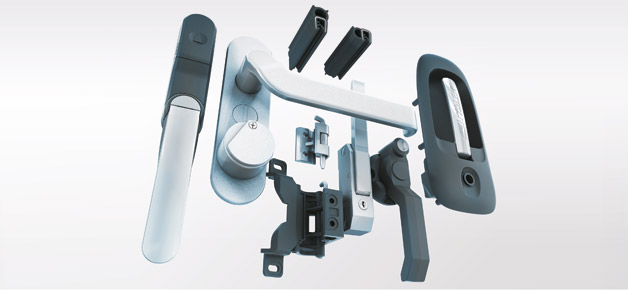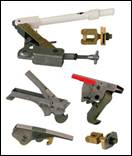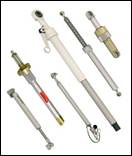Fasteners & Springs
Fasteners are screws, bolts, nuts and all kinds of other tools used to join and secure materials together. Fasteners are used in all kinds of industrial, commercial and consumer products. Many manufacturers have to determine what kind of fasteners to use with their products. Without high-quality fasteners, products will fall apart, the lifespan of equipment is shorter, and the cost of manufacturing increases significantly. Many manufacturing companies spend a lot of time and energy in the creation and selection of specialty fasteners for their products due to the significant role they they have in the final success of a product.
If your job is to select these fasteners, choosing the right fastener is critical to your product's success.
Mechanical Springs are wire springs that function in a spring mechanism that compresses, extends, rotates, slides, pulls and exerts force when an equal or greater force is applied. A spring mechanism can exert pressure, rotational force or pulling strength in a variety of ways.
There are 4 main types of Mechanical Springs and how they are commonly utilized in industrial, commercial and consumer products:
- Compression Springs: Compression Springs squeeze together to create a load. You will often find these inside switches, automotive suspensions, and valves
- Extension Springs: An Extension Spring stretches apart to create load. They often have little loops on the ends to attach to other components. Extension springs are often found in tensioning devices, switches and levers.
- Torsion Springs: A torsion spring rotates around an axis to create load. They release their load in an arc around the axis. They are commonly found in mouse traps and rocker switches. They are good for things that rotate less than 360 degrees
- Wire Forms: Wire Forms are "springs" in every sense of the word, but they are distinguished by lack of helix or coil configuration as part of their design. Instead, they are wound into variations of a "U" or "V" configuration. Their primary purpose is to flex in and then snap back out. The familiar cotter pin is a typical example of a wire form. Wire forms are most commonly used as fastening mechanisms, or clips, in machinery of every variation. These clips hold parts securely in place, but are easily removed when maintenance or adjustment is required.









